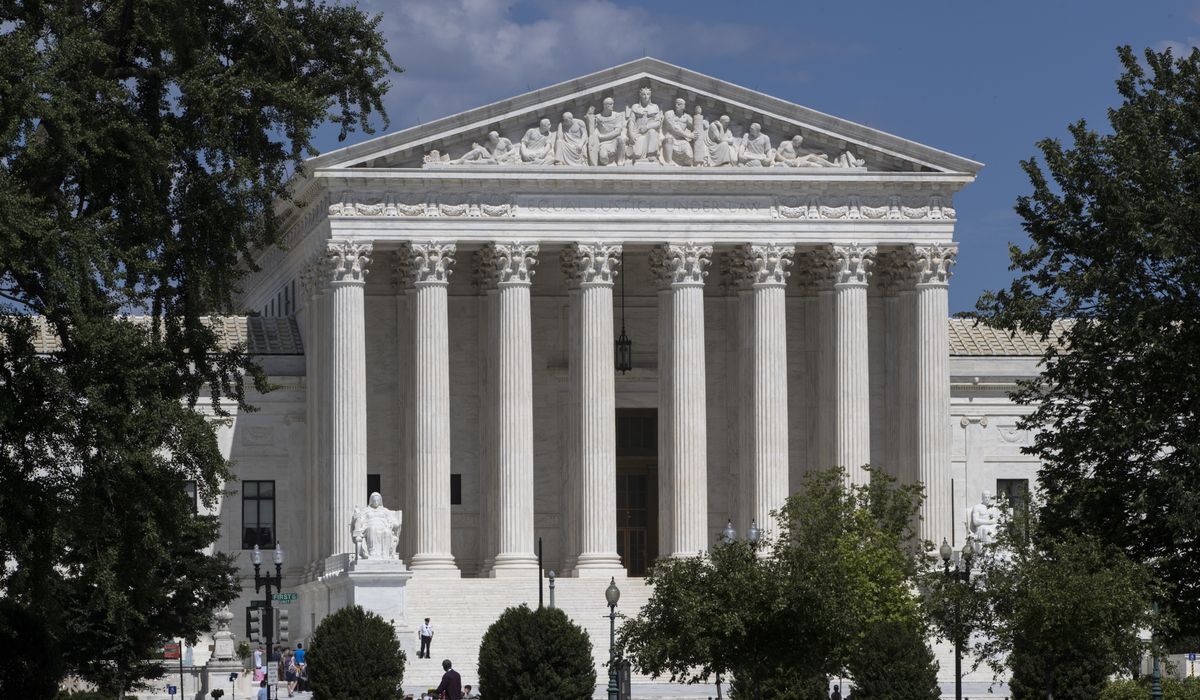


The Supreme Court on Tuesday reaffirmed that truly threatening speech is not protected by the First Amendment, but said states have to prove that the person who said it had at least some understanding that the words crossed a line.
In a 7-2 ruling, the court erased the conviction of a Colorado man who sent repeated intrusive messages to a musician that she considered threatening, but that he argued were not.
A state court had found him guilty using an “objective” standard: That an average person would have known the behavior was out-of-bounds.
But the Supreme Court said that violated his First Amendment rights, ruling that a higher standard is needed when restricting someone’s speech.
“The State must show that the defendant consciously disregarded a substantial risk that his communications would be viewed as threatening violence,” wrote Justice Elena Kagan in the key opinion.
The case comes at a time when Americans are increasingly sensitive to offensive terms and society debates microaggressions, with government increasingly trying to write boundaries into laws and speech codes.
The justices identified a tradition of criminalizing speech that is truly threatening, such as sending a letter vowing to assassinate the president.
But speech that is not intentionally meant to threaten, but that is unwelcome by the recipient, is tougher to place on the First Amendment scale.
“The question presented is whether the First Amendment still requires proof that the defendant had some subjective understanding of the threatening nature of his statements,” Justice Kagan wrote. “We hold that it does, but that a mental state of recklessness is sufficient.”
Justice Amy Coney Barrett dissented from the ruling. She said in other areas of free speech the court has adopted an objective speech standard. She wondered why the majority was dispensing with that when it comes to true threats.
She said the First Amendment rule the court fashioned Tuesday could make it tougher to get a restraining order against someone who threatens to bomb an airport, or could protect a student who talks about carrying a gun to school to “shoot everyone he hates.”
“A delusional speaker may lack awareness of the threatening nature of her speech; a devious speaker may strategically disclaim such awareness; and a lucky speaker may leave behind no evidence of mental state for the government to use against her. The Court’s decision thus sweeps much further than it lets on,” she wrote in a dissent joined by Justice Clarence Thomas.
Meanwhile, Justice Sonia Sotomayor agreed with Justice Kagan’s conclusion but disagreed with her recklessness standard, saying it still criminalized too much speech that should be protected.
She said that means policing speech will now “depend on ever-shifting community norms around language.”
“Especially in a climate of intense polarization, it is dangerous to allow criminal prosecutions for heated words based solely on an amorphous recklessness standard,” she wrote.
She said states needed to be able to show an intent to threaten if they want to prosecute threat speech.
The case involved Billy Raymond Counterman, a Colorado man who sent repeated unsolicited messages on social media to Coles Whalen, a musician who was identified only by initials in court documents but who has publicly discussed the case on her website.
Ms. Whalen said she received 1,000 messages and called them “life threatening and life altering.” She said she had to curtail her music career because she was so terrified that she was being followed and would be hurt.
Among the messages were “Was that you in the white Jeep?” and “You’re not being good for human relations. Die. Don’t need you” and “Staying in cyber life is going to kill you. Come out for coffee. You have my number.”
Counterman argued his words were protected First Amendment speech and disputed the allegation he was threatening. He was convicted of stalking under Colorado law, with judges saying even if he didn’t mean it, his words would have been seen as dangerous to an objective observer.
During oral argument, Chief Justice John G. Roberts Jr. questioned how some of the statements could be read as threats.
He pointed out that any number of people might chide someone over his or her online presence.
Colorado, which prosecuted the case, said it was the context of all the statements put together. The state said Ms. Whalen tried to kick Counterman off her social media, but he persisted.
The case is Counterman v. Colorado.
The court’s ruling Tuesday vacates Counterman’s conviction and sends the case back to Colorado for another look at the evidence in light of the justices’ new standard.
Colorado Attorney General Phil Weiser said the high court’s view of the First Amendment was “unfortunate” and will make it difficult to stop stalkers.
“Stalkers cause major harm by their words alone, whether they mean to cause that harm or not. But the court has chosen to prioritize threats over those terrorized by the threats. According to the court, protecting the speech of threatening stalkers matters more than guarding against the life-changing harms caused to those made to fear for their lives. This ruling fails to take seriously the compelling research that documents how stalking cases — particularly in the domestic violence context — often escalate into physical violence,” he said.
• Stephen Dinan can be reached at sdinan@washingtontimes.com.
• Alex Swoyer can be reached at aswoyer@washingtontimes.com.
